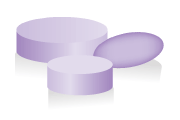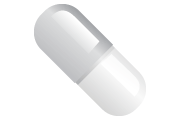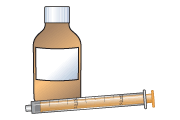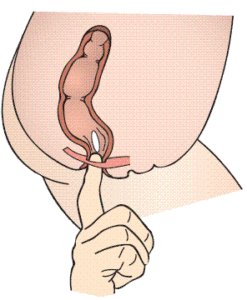Paracetamol for mild-to-moderate pain
This leaflet is for parents and carers about how to use this medicine in children. Our information may differ from that provided by the manufacturers, because their information usually relates to adults. Read this leaflet carefully. Keep it somewhere safe so that you can read it again.
Wait at least 4 hours between doses of Paracetamol. Do not give more than four doses in 24 hours.
Name of medicine
Paracetamol
Common brands: Panadol, Disprol, Calpol, Medinol, Alvedon, Perfalgan
Why is it important for my child to take Paracetamol?
Paracetamol will help your child to feel less pain.
What is Paracetamol available as?
- Tablets: 500 mg
- Capsules: 500 mg
- Dispersible tablets: 120 mg, 500 mg
- Liquid medicine or syrup: 120 mg, 250 mg or 500 mg in 5 mL; sugar-free versions are available
- Suppositories: a range of strengths are available on prescription
When should I give Paracetamol
- If your child needs help with pain day and night for several days, give a dose of Paracetamol every 6 hours. This will help to manage the pain safely for a few days without the risk of giving too much Paracetamol.
- If your child has pain that comes and goes, give a dose of Paracetamol when they first complain of pain. Wait at least 4 hours before giving another dose.
- You must not give your child more than four doses of Paracetamol in 24 hours, so you may have to wait up to 6 hours between doses.
- Write down the time that you give each dose, to help you remember.
How much should I give?
Your doctor will work out the amount of Paracetamol (the dose) that is right for your child. The dose will be shown on the medicine label.
If you have bought your medicine over the counter, follow the instructions on the packaging. If you are not sure how much to give, contact your pharmacist or doctor.
It is important that you follow your doctor’s instructions about how much to give.
How should I give Paracetamol?

Tablets
- Tablets should be swallowed with a glass of water, squash or juice. Your child should not chew the tablet.

Capsules
- Capsules should be swallowed with a glass of water, squash or juice. Your child should not chew the capsule.

Liquid medicine or syrup
- Shake the medicine well.
- Measure out the right amount using an oral syringe or a medicine spoon. You can get these from your pharmacist. Do not use a kitchen teaspoon as it will not give the right amount.

Suppositories
- Suppositories are inserted into the rectum (back passage).
- Ideally your child should open their bowels (do a poo) before you administer Paracetamol suppositories.
- Wash your hands with soap and hot water.
- Your child should be lying on his or her side or front.
- Hold one buttock gently to one side so that you can see the back passage.
- Unwrap the suppository and hold the it with the rounded end close to the back passage.
- Use one finger to push the suppository gently into the back passage. It needs to go in by about 2 cm. (You can use lubricating gel to make the insertion more comfortable.)
- Your child should stay lying down for about 15 minutes, and ideally for an hour, so that the suppository doesn’t come out.
- Wash your hands again with soap and hot water.
- If your child empties their bowels (does a poo) within 30 minutes of inserting a suppository, you may need to insert another one.
When should the medicine start working?
Your child should start to feel less pain about 30 minutes after taking Paracetamol tablets or liquid medicine. It may take up to an hour for a suppository to work properly.
What if my child is sick (vomits)?
Tablets or liquid medicine
- If your child is sick less than 30 minutes after having a dose of paracetamol, give them the same dose again.
- If your child is sick more than 30 minutes after taking a dose, you do not need to give them another dose. Wait until the next normal dose.
Suppositories
- If your child is sick at any time, you do not need to give them another dose, as the suppository will still work.
What if I forget to give it?
If your child is in pain, give the missed dose as soon as you remember. You must then wait at least 4 hours before giving the next dose.
Never give a double dose of Paracetamol.
What if I give too much?
If you think you may have given an extra dose of paracetamol by mistake, wait at least 8 hours before giving any more.
It can be dangerous to give your child too much Paracetamol. The effects of an overdose may not be obvious, but they can be serious and need treatment.
If there is any possibility that your child may have had more than a double dose, or you are not sure, contact your doctor or or local NHS services (details at end of leaflet) or take your child to hospital straight away. Take the medicine container or pack with you, even if it is empty. This will be useful to the doctor. Have the packet with you if you telephone for advice.
Are there any possible side effects?
- Paracetamol rarely causes side-effects when given at the correct dosage.
- Amounts of paracetamol above the recommended dose can cause permanent damage to the liver. It is therefore important that you follow the dosage instructions provided by your doctor.
There may sometimes be other side effects that are not listed above. If you notice anything unusual and are concerned, contact your doctor. You can report any suspected side effects to a UK safety scheme at mhra.gov.uk/yellowcard
Can other medicines be given at the same time as Paracetamol?
- Many medicines that you can buy for colds or pain contain paracetamol (this information is given on the label). Do not give such medicines to your child if you have given them Paracetamol, as you risk giving them too much.
Check with your doctor or pharmacist before giving any other medicines to your child. This includes herbal and complementary medicines.
- You can give your child medicines that contain ibuprofen, unless your doctor has told you not to.
Is there anything else I need to know about this medicine?
- Paracetamol is an everyday drug, but it is potentially dangerous if too much is taken. Be careful to keep it out of the reach of children.
General advice about medicines
- If you are not sure a medicine is working, contact your doctor but continue to give the medicine as usual in the meantime. Do not give extra doses, as you may do harm.
- Write down the times that you give Paracetamol, to help you remember, and to make sure that you don’t give too much.
- Make sure that the medicines you have at home have not reached the ‘use by’ date on the packaging. Give old medicines to your pharmacist to dispose of.
Where should I keep this medicine?
- Keep the medicine in a cupboard, away from heat and direct sunlight.
- It does not need to be kept in the fridge.
- Make sure that children cannot see or reach the medicine.
- Keep the medicine in the container it came in.
Who to contact for more information?
Your doctor, pharmacist or nurse will be able to give you more information about Paracetamol and about other medicines used to treat pain.
England: NHS 111
Tel 111
www.nhs.ukScotland: NHS 24
Tel 111
www.nhs24.scotNorthern Ireland: NI Direct
Wales: NHS 111 Wales
Tel 111
www.111.wales.nhs.ukCopyright disclaimer
Version [2]. © NPPG, RCPCH and WellChild, all rights reserved. Review by January 2017.
The primary source for the information in this leaflet is the British National Formulary for Children. For details on any other sources used for this leaflet, please contact us through our website, www.medicinesforchildren.org.uk.
We take great care to make sure that the information in this leaflet is correct and up-to-date. However, medicines can be used in different ways for different patients. It is important that you ask the advice of your doctor or pharmacist if you are not sure about something. This leaflet is about the use of these medicines in the UK, and may not apply to other countries. The Royal College of Paediatrics and Child Health (RCPCH), the Neonatal and Paediatric Pharmacists Group (NPPG), WellChild and the contributors and editors cannot be held responsible for the accuracy of information, omissions of information, or any actions that may be taken as a consequence of reading this leaflet.
